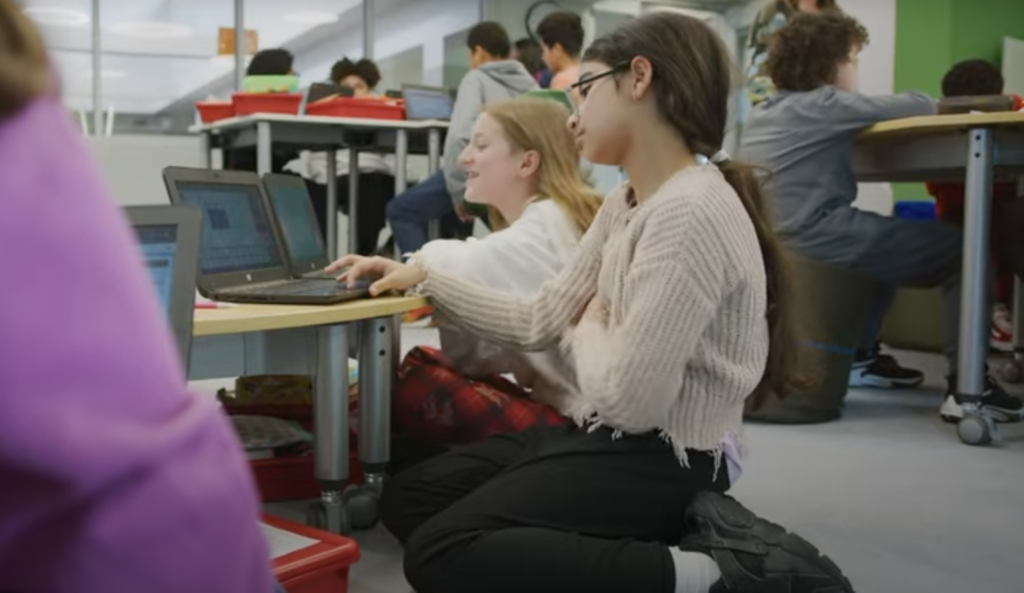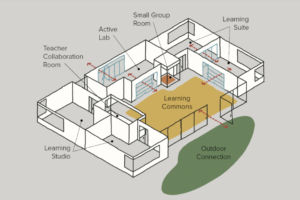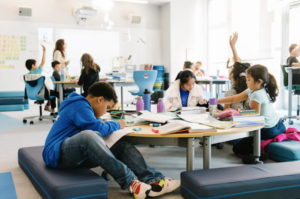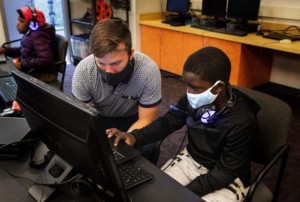Addressing the Reluctancy to Transform Learning Environments
Key Points
-
Learning Communities offer a more collaborative and holistically supportive environment for kids and adults alike.
-
That level of authentic student agency requires a variety of safe, desirable environments that are highly accessible.
-
Creating a diverse array of environments that meet the spectrum of needs of any group of kids is practically impossible within the four walls of a classroom, but it’s what defines a well-designed Learning Community.

By: Nathan Strenge
While planning this short film below in partnership with the dedicated educators at Eden Park Elementary School, a resonant theme emerged – the importance of preserving existing best teaching practices even as we innovate. As a classroom teacher of a decade, this insight instilled in me a profound hope for the evolution and expansion of future Learning Communities.
Knowing how many teachers are struggling with the weight of teaching in an isolated environment and feeling overwhelmed to engage kids in an age where mental health needs are vast, Learning Communities offer a more collaborative and holistically supportive environment for kids and adults alike.
So why is their insight about preserving existing best teaching practices so important? It has to do with the reluctance some communities have to move away from a classroom-based spatial model, even if they see its limitations.
There’s little question why a classroom-based approach to schooling has had such a profound staying power (hint: it’s not because it’s best for kids). To put it simply: it’s what we know. Here in the United States, the vast majority of adults alive today went to schools using a classroom model. Today’s teachers were trained to teach in a classroom and have a lifetime of experiences in a classroom. Because of this familiarity and its effects on operating a school building, classroom-based models continue to be designed and built.
Compounding the “it’s what we know” problem is how little the K-12 education industry has invested in research and development. From a report by Aaron K. Chatterji at Duke University, “Research and development (R&D) accounts for a tiny share of total expenditures in K–12 education, around 0.2%, or 1/50 the rate of the most innovative industries”

Caption: Research & Development Spending (from Chatterji report)
Despite these historical factors, many communities recognize the power of place and the limitations of a classroom-based approach. Schools are becoming aware that giving young people more agency to move around to find the right place at the right time is essential to wellness and student-centered learning. That level of authentic student agency requires a variety of safe, desirable environments that are highly accessible. Creating a diverse array of environments that meet the spectrum of needs of any group of kids is practically impossible within the four walls of a classroom, but it’s what defines a well-designed Learning Community.
As more and more schools embrace different spatial models, it has to be very reassuring for classroom-based teachers to hear from Eden Park educators that maintaining existing best teaching practices is important. I am hopeful that hearing this insight will alleviate some of the fear caused when considering transitioning to Learning Communities.
Nathan Strenge is a Senior Learning Designer at Fielding International, where he works with school communities around the world to create environments that foster creativity, collaboration, wellness, and belonging.







0 Comments
Leave a Comment
Your email address will not be published. All fields are required.